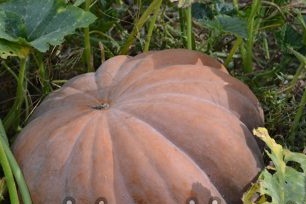 Pumpkin is considered unpretentious culture, therefore, subject to certain rules when preparing seeds, further feeding, care, growing pumpkins in the open ground can bring a good harvest. Let's consider everything in order.
Pumpkin is considered unpretentious culture, therefore, subject to certain rules when preparing seeds, further feeding, care, growing pumpkins in the open ground can bring a good harvest. Let's consider everything in order.
Content
Pumpkin seed preparation
Before planting the seeds must be prepared. To this end, they are placed in a solution of "sodium humate" or "potassium humate" for a day. Then cover with a moistened napkin for several days. In this case, the material must be moistened with water. A suitable temperature regime for seed germination is 22-23 degrees.
Seeds are also tested for germination. The method is used similar to that for germination. The procedure is carried out a month before the landing.
Soil preparation for sowing
For culture, you need to select a site with good lighting and warming.
It is not recommended to choose sunflower, potato as precursors, watermelonmelon. In one place, pumpkin can not be grown for more than a year.
The landing begins in late May (gardener and gardener lunar calendar to help you). During this period, frosts are no longer terrible, and the ground is warm enough. If the soil has not yet warmed up, then the seeds will rot and will not sprout.
Planting pumpkins in the open ground
The land is plowed to a depth of 50 centimeters, fertilizers are introduced into it: manure, compost, phosphorus and potash.
Then a bed is prepared, it should be wide, measuring 70 centimeters. Wells are made. In each of them lies 5 seeds. The distance between the holes is more than half a meter.
Before planting, water should be poured into each well, after the liquid has been absorbed, seed can be placed, and mulched on top with peat or humus.
Some gardeners protect the plants with plastic wrap. After the emergence of seedlings, the film is cut, the frame is placed, and the insulation material is again laid on top.
After the appearance of several leaves, shoots need to be thinned.
Feeding and watering
During cultivation, pumpkin needs timely and plentiful watering. Especially in dry and hot weather, as well as at the time of flowering.
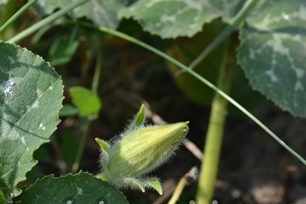
Water for irrigation should correspond to a temperature of at least 20 degrees. Cool water can have a detrimental effect on crops.
Before irrigation, the soil must be loosened and all weeds removed.
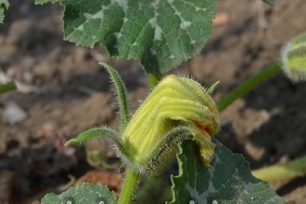
Pumpkin feeding is carried out in two steps:
- The first time it is needed when 3 leaves appear. Dry nitrofoska is perfect.
- The second time is carried out with the formation of lashes. Apply nitrophosk diluted in water.
Feeding with a solution of mullein, ash has an effective effect.
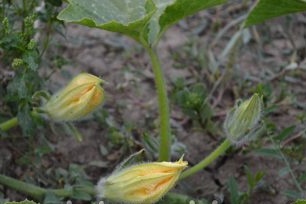
Thanks to these fertilizers, the growth and development of the plant is accelerated.
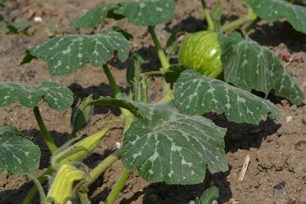
Pumpkin care during outdoor cultivation
Caring for a plant provides for its correct formation. To do this, you can use the following methods:
- After the formation of a large number of ovaries and shoots on the sides, you need to get rid of them. In total, several leaves and 3 ovaries are left.
The top of the plant is pinched, and the flowers are removed. If this procedure is not carried out, then large-sized fruits will not grow.
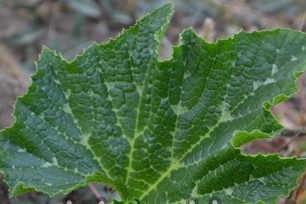
- On the lateral ovary leave one fruit, on the main - two fruits. Several sheets are left on all the lashes, the tip is pinched.
Powder shoots - a mandatory agricultural practice, to accelerate the development of fruits.
First you need to unravel them, lay them on the ground and sprinkle them on top of the ground in several places.
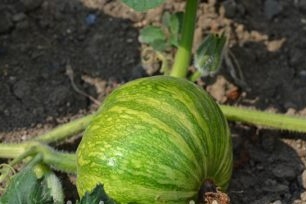
Varieties of pumpkins
In nature, there are a huge variety of pumpkin varieties. They differ in both external and taste characteristics.
There are three varieties of pumpkin:
1. Hard bark. This type has a hard skin. They ripen early. The fruits are not very large, but the seeds are very tasty. Among this species, bush representatives are found.
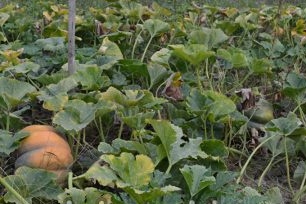
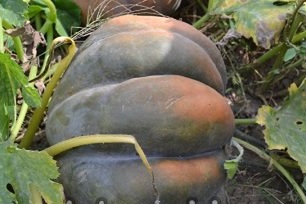
The peduncle is ribbed, the stalk is prickly, cream-colored seeds.
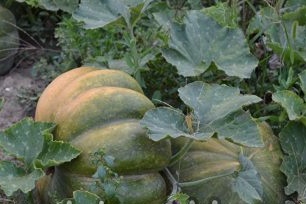
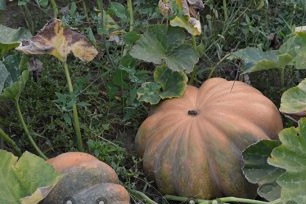
A vivid representative of hard-barked pumpkin is the gymnosperm plant variety.
2. Large-fruited. A huge variety. In addition, its fruits are sweet, sugar.

The peduncle is presented in the form of a cylinder, the stem is rounded. Sunflower seeds.
This species best tolerates low temperature conditions and has the ability to persist for a long time.
One of the varieties representing large-fruited pumpkin is Hundred Pound. The name speaks for itself.
3. Nutmeg. The variety is considered one of the most delicious. Their disadvantage is heat-loving, mature late. Grow them in warm areas.
The peduncle expanded to the base, brown seeds.
It is advisable to remove all varieties of pumpkin before frost.
Cleaning begins in August. Duration may be two months. It depends on the pumpkin variety and climate.
Cleaning is done neatly. It is necessary to cut the fruit along with a small peduncle.
It is important to choose a place to store. It must be cool, in addition, the humidity should not be increased. Otherwise, the storage time will be reduced by several months.
We also offer to watch a video that says all about growing pumpkins in their summer cottage.

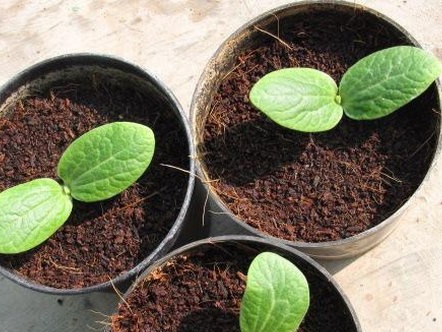
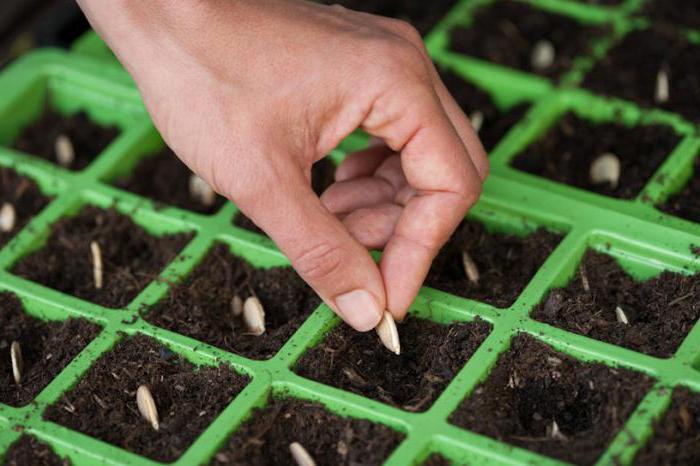

 Pumpkin and Zucchini Disease Mosaic
Pumpkin and Zucchini Disease Mosaic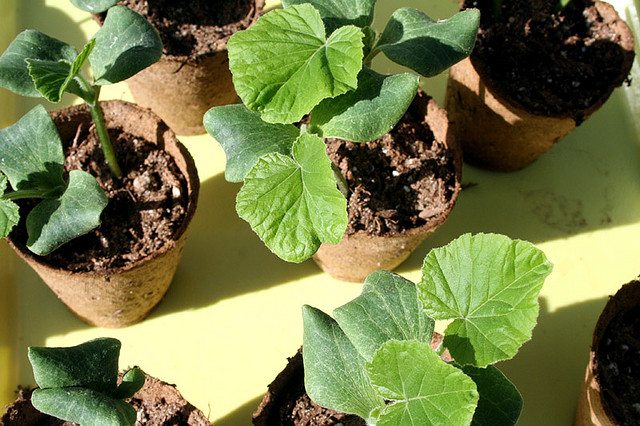 The timing of planting pumpkin seedlings in the suburbs of 2016
The timing of planting pumpkin seedlings in the suburbs of 2016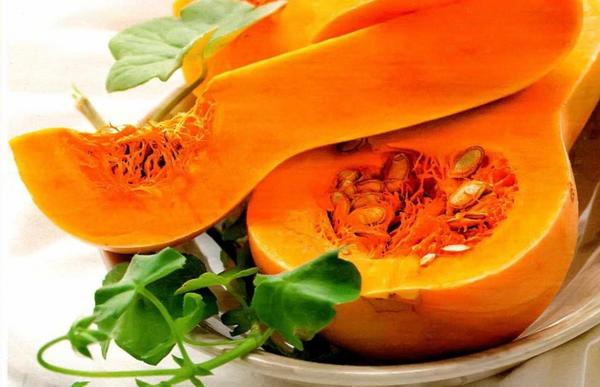 When to plant pumpkin for seedlings in 2016 according to the lunar calendar
When to plant pumpkin for seedlings in 2016 according to the lunar calendar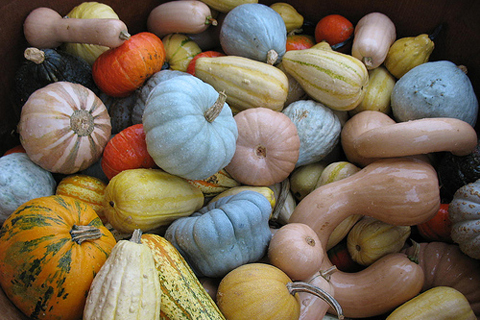 About the timing of pumpkin harvesting in the suburbs
About the timing of pumpkin harvesting in the suburbs